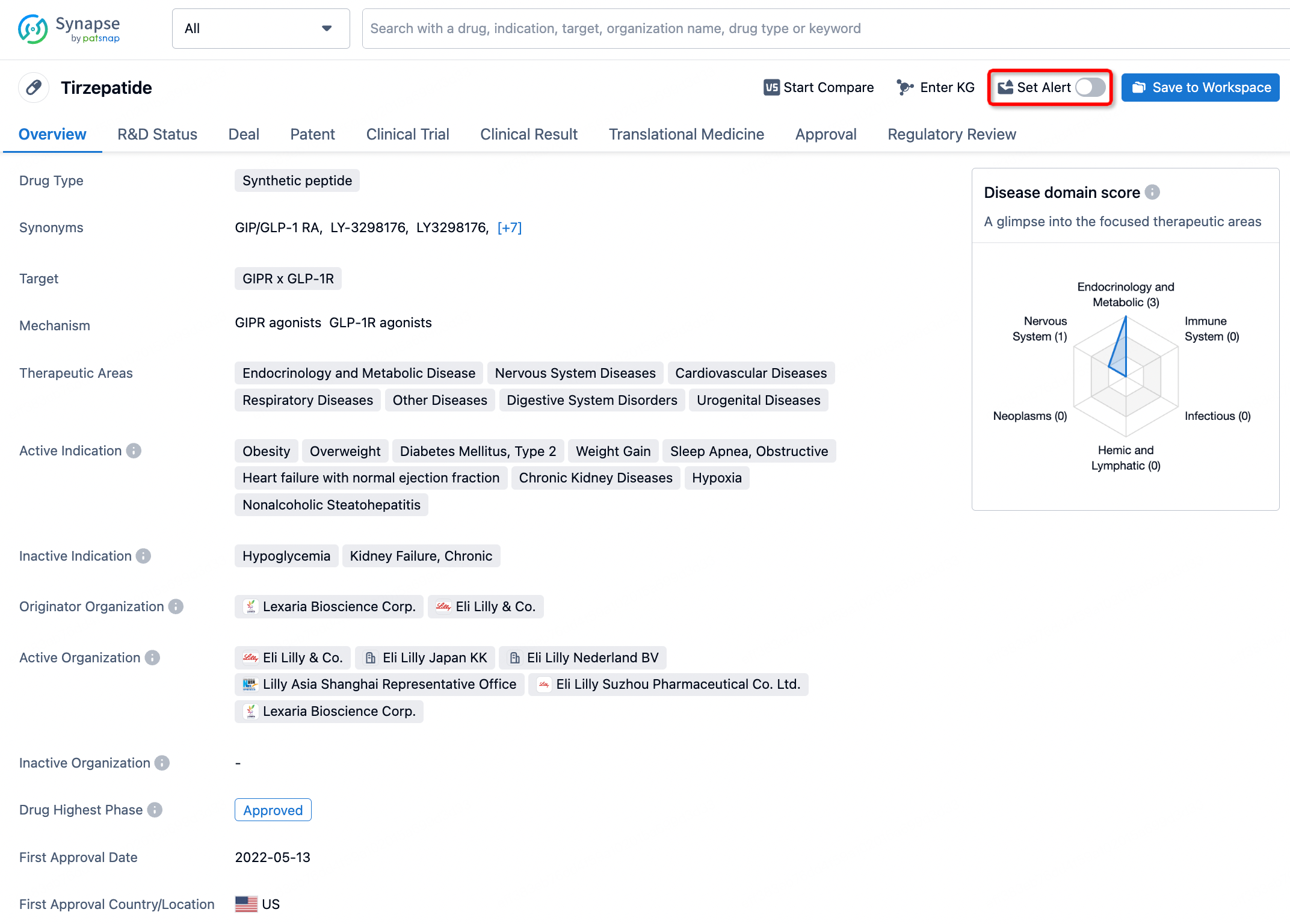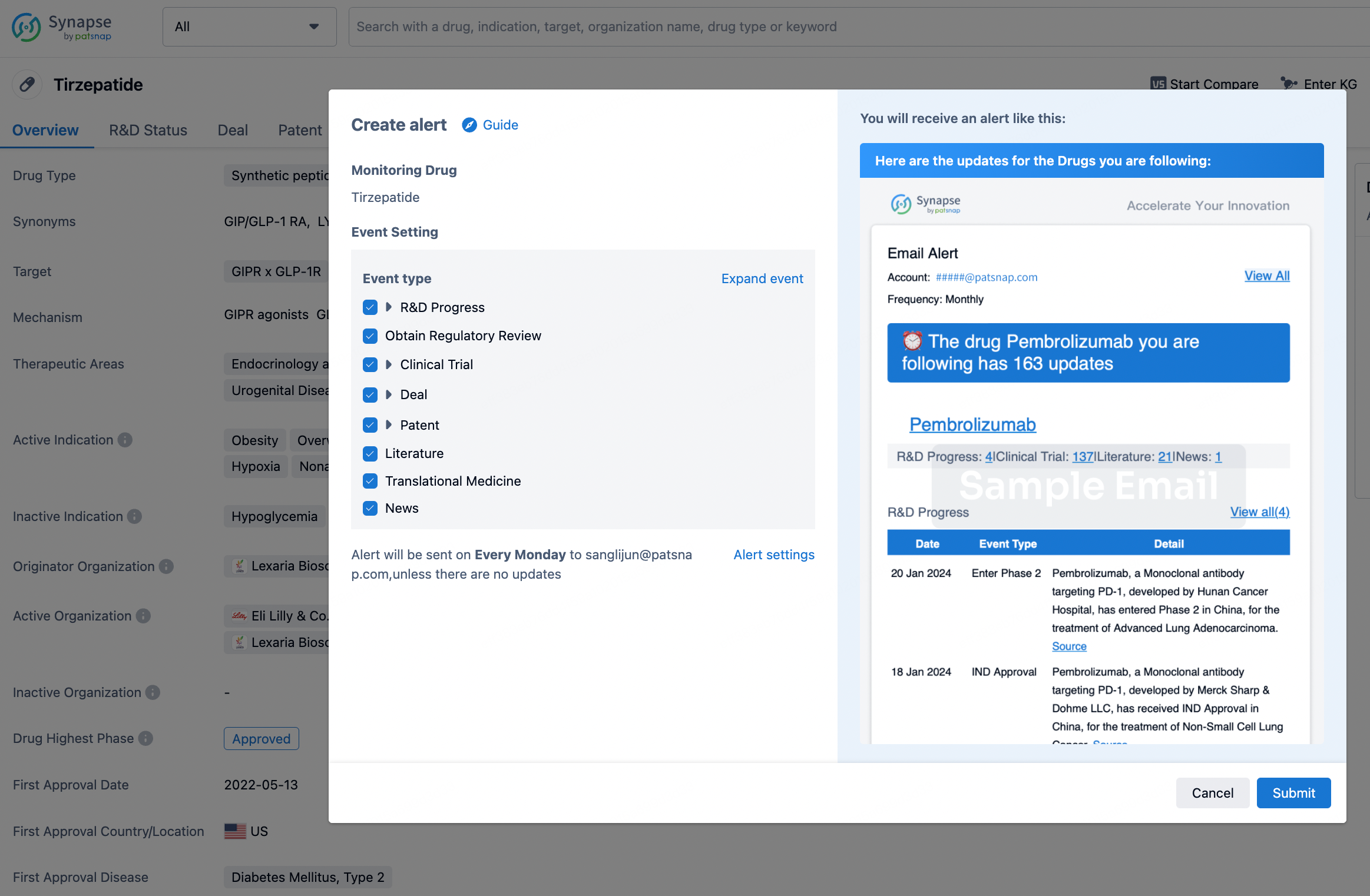Request Demo
What are the side effects of Clonazepam?
12 July 2024
When considering the use of Clonazepam, it's crucial to understand the potential side effects associated with this medication. Clonazepam, often marketed under the brand name Klonopin, is a benzodiazepine primarily prescribed for the treatment of anxiety disorders, panic attacks, and certain types of seizures. While Clonazepam can be highly effective for these conditions, it also carries a risk of side effects, ranging from mild to severe.
One of the most common side effects of Clonazepam is drowsiness. This sedative effect can be helpful for individuals who need relief from anxiety or insomnia, but it can also interfere with daily activities. Many users report feeling unusually tired or lethargic, especially during the initial stages of treatment. It's advisable to avoid operating heavy machinery or driving until you understand how Clonazepam affects you.
Another frequently reported side effect is dizziness. This is particularly concerning because it can increase the risk of falls and accidents. Users often experience a sense of imbalance or a spinning sensation, which can be unsettling and dangerous if not managed appropriately.
Cognitive impairment is another side effect that can impact daily life. Some individuals find that their memory, concentration, and overall mental clarity are diminished while taking Clonazepam. This can affect work performance, academic pursuits, and general quality of life.
In addition to these common side effects, Clonazepam can also cause gastrointestinal issues such as nausea, vomiting, and constipation. These symptoms can be uncomfortable and may require dietary adjustments or additional medications to manage.
Emotional changes are another area of concern. While Clonazepam is used to treat anxiety and panic disorders, it can sometimes lead to mood swings, depression, or even paradoxical reactions such as increased anxiety and agitation. Monitoring emotional well-being is essential, and any significant changes should be discussed with a healthcare provider.
Physical dependence is a significant risk associated with long-term use of Clonazepam. The body can become accustomed to the presence of the drug, leading to tolerance and the need for higher doses to achieve the same effect. Withdrawal symptoms can be severe and include irritability, anxiety, tremors, and seizures. Therefore, it is crucial to follow a healthcare provider's guidance for tapering off the medication rather than stopping abruptly.
Less common but more severe side effects include respiratory depression, which is a slowing or stopping of breathing. This is particularly dangerous and can be life-threatening, especially when Clonazepam is taken in combination with other central nervous system depressants like alcohol or opioids. Signs of respiratory depression include shallow breathing, blue-colored lips or fingers, and loss of consciousness. Immediate medical attention is required if these symptoms occur.
Allergic reactions, though rare, can also occur. These may manifest as skin rashes, itching, swelling, severe dizziness, or trouble breathing. Any signs of an allergic reaction should prompt immediate discontinuation of the medication and urgent medical consultation.
In summary, while Clonazepam can be an effective treatment for anxiety, panic disorders, and seizures, it is not without its risks. Common side effects include drowsiness, dizziness, cognitive impairment, and gastrointestinal issues. Emotional changes and the risk of physical dependence are also significant concerns. Severe side effects such as respiratory depression and allergic reactions, though rare, require immediate medical attention. It is essential to have an open dialogue with your healthcare provider to manage these risks and ensure the safe use of Clonazepam.
One of the most common side effects of Clonazepam is drowsiness. This sedative effect can be helpful for individuals who need relief from anxiety or insomnia, but it can also interfere with daily activities. Many users report feeling unusually tired or lethargic, especially during the initial stages of treatment. It's advisable to avoid operating heavy machinery or driving until you understand how Clonazepam affects you.
Another frequently reported side effect is dizziness. This is particularly concerning because it can increase the risk of falls and accidents. Users often experience a sense of imbalance or a spinning sensation, which can be unsettling and dangerous if not managed appropriately.
Cognitive impairment is another side effect that can impact daily life. Some individuals find that their memory, concentration, and overall mental clarity are diminished while taking Clonazepam. This can affect work performance, academic pursuits, and general quality of life.
In addition to these common side effects, Clonazepam can also cause gastrointestinal issues such as nausea, vomiting, and constipation. These symptoms can be uncomfortable and may require dietary adjustments or additional medications to manage.
Emotional changes are another area of concern. While Clonazepam is used to treat anxiety and panic disorders, it can sometimes lead to mood swings, depression, or even paradoxical reactions such as increased anxiety and agitation. Monitoring emotional well-being is essential, and any significant changes should be discussed with a healthcare provider.
Physical dependence is a significant risk associated with long-term use of Clonazepam. The body can become accustomed to the presence of the drug, leading to tolerance and the need for higher doses to achieve the same effect. Withdrawal symptoms can be severe and include irritability, anxiety, tremors, and seizures. Therefore, it is crucial to follow a healthcare provider's guidance for tapering off the medication rather than stopping abruptly.
Less common but more severe side effects include respiratory depression, which is a slowing or stopping of breathing. This is particularly dangerous and can be life-threatening, especially when Clonazepam is taken in combination with other central nervous system depressants like alcohol or opioids. Signs of respiratory depression include shallow breathing, blue-colored lips or fingers, and loss of consciousness. Immediate medical attention is required if these symptoms occur.
Allergic reactions, though rare, can also occur. These may manifest as skin rashes, itching, swelling, severe dizziness, or trouble breathing. Any signs of an allergic reaction should prompt immediate discontinuation of the medication and urgent medical consultation.
In summary, while Clonazepam can be an effective treatment for anxiety, panic disorders, and seizures, it is not without its risks. Common side effects include drowsiness, dizziness, cognitive impairment, and gastrointestinal issues. Emotional changes and the risk of physical dependence are also significant concerns. Severe side effects such as respiratory depression and allergic reactions, though rare, require immediate medical attention. It is essential to have an open dialogue with your healthcare provider to manage these risks and ensure the safe use of Clonazepam.
How to obtain the latest development progress of all drugs?
In the Synapse database, you can stay updated on the latest research and development advances of all drugs. This service is accessible anytime and anywhere, with updates available daily or weekly. Use the "Set Alert" function to stay informed. Click on the image below to embark on a brand new journey of drug discovery!
AI Agents Built for Biopharma Breakthroughs
Accelerate discovery. Empower decisions. Transform outcomes.
Get started for free today!
Accelerate Strategic R&D decision making with Synapse, PatSnap’s AI-powered Connected Innovation Intelligence Platform Built for Life Sciences Professionals.
Start your data trial now!
Synapse data is also accessible to external entities via APIs or data packages. Empower better decisions with the latest in pharmaceutical intelligence.


